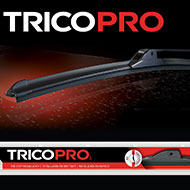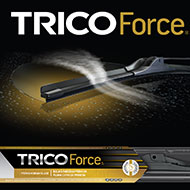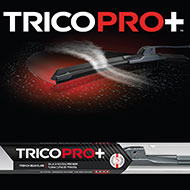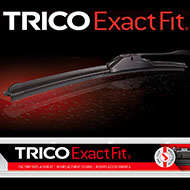When to Change Windshield Wipers?
Windshield wipers are an important safety feature of your vehicle. They remove rain, snow, dust and debris from your field of vision, allowing you to navigate the road safely.
Knowing when to replace windshield wiper blades is critical—and easy. You should replace them if:
- The blade or arm is broken
- They leave streaks or marks on the glass
- They make noises while operating
- They stick to the windshield
- They reduce visibility
Watch the following video for more details on when to change your wiper blades.
Trending Windshield Wiper Blades


Keep visibility high and costs low.


Premium quality for clear visibility in any weather.


Our exclusive weather-conquering wiper blades.


The ideal fit meets unbeatable value.
How do I change windshield wipers?
The key to staying safe in stormy weather (other than your tires, obviously), is ensuring that you can see through your windshield! That's where a new set of wipers comes into play! If you've found yourself wondering how to change or replace your windshield wipers, you're in the right spot.
Here's our quick guide on how to replace, change or install your windshield wipers!
-
Remove the old wiper blades (see how below); leave the wiper arms extended
-
Ensure that old and new blades are the same size (see details on sizing your wipers below)
-
Clean the new blades before installation (to remove oil, grease and debris)
-
Fit the latch of the arm to the connector of the new wiper blade
-
Latch the new blade onto the arm by reversing how you removed the old blades
-
Test that the blades work; don't wait till the next downpour to be sure
You can also consult the installation instructions on the product packaging or check out the following video for a quick tutorial.
If the DIY thing just isn't you, don't sweat. You can buy your windshield wipers and get FREE installation at any of our locations!
How do I remove my windshield wipers?
Blades are connected to the wiper arms by a hooking mechanism. The most common one is called the J-hook. Other common mechanisms include side pins, bayonets, pinch tab type connectors and saddle connectors. Even though these are all different mechanisms, removing the windshield wipers from your vehicle generally works the same.
Here's how to remove windshield wipers with a J-hook:
-
Lift the arm away from the windshield so it stands up
-
Turn the wiper so that it is perpendicular to the arm (forming a T shape)
-
Slide your fingers between the metal backing and the rubber blade
-
Pull down until it unhooks
-
Slide the wiper away from the hook
Some hook mechanisms require pushing a button or pulling a latch to unhook the blade from the arm.
What size windshield wipers do I need?
The first step in changing or replacing your wipers is knowing what size you need. Each vehicle requires a different fit; an SUV or truck's windshield is larger than say, a Corolla. Some makes and models have a longer driver-side blade than the passenger. Installing an incorrectly fitting blade will prevent optimal performance or damage the other blade or its components.
For instance, if you install blades that are too long, they will catch on each other and possibly damage the wiper motor. If you install blades that are too small, it can lessen your field of vision.
Also, keep in mind that some windshield wipers are specialized in a specific kind of performance, such as winter or rainy weather. Make sure you purchase the kind you need.
To find what size windshield wipers you need, you can:
- Let us help you find your size
- Check your vehicle's owner's manual
- Use the sizing guide freely available in any auto parts store
- Look online for sizes that fit your vehicle
What's the difference between beam blades and conventional blades?
Invented in 1903, wiper blades have undergone many technological advancements over the years. The biggest wiper blade advancement of late? The arrival of the beam wiper blade.
Conventional blades were designed to pair with vintage, flat windshields. While this worked at the time, these blades are less effective on modern vehicles.
Contemporary rides are designed with a curved windshield for a more aerodynamic design. Conventional flat blades don't adhere well to the curved surface of these modern vehicles. That means less effective clearing of rain, slush and snow.
Meanwhile, beam blades are designed to adapt to this curvature, providing more pressure points, resulting in better windshield wiper coverage. The long and the short of that is: clearer lines of sight, no matter the weather.
Another advantage of the beam blade is its durable spoiler design. This reduces wind resistance, ensuring better windshield contact, even inclement weather like heavy thunderstorms.
Speaking of thunderstorms, we've put together driving tips for staying safe on the roads in any season and any weather! Be sure to check them out.